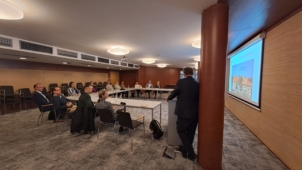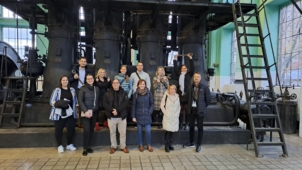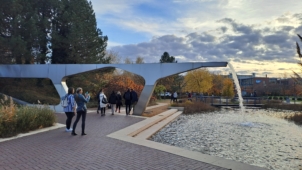Can bee pastures be part of business strategy?
On 16 November, at our last Race to Zero Working Group this year, we got a better insight into the operations and long-term commitment of two of our member companies, and a definitive “yes” to the question in the title.
With the help of our host, János Kocsány, CEO of Graphisoft Park, we were able to learn about the history of the brownfield project, which is unprecedented in Europe. We chose this as one of the topics of the meeting because this year Graphisoft Park won the Sustainable Future Award in ‘Business Solution – Biodiversity‘ category for its forward-thinking solutions. Moreover, the park, with 60% green space, has an outstanding tenant loyalty index (15 years) and is not just building offices, but a cohesive community, with a special focus on nature conservation and restoration.

Graphisoft Park’s case study with results and inspiring thoughts so far is also available in the Business Solutions sub-page under Resources on BCSDH’s website, along with several other examples of companies promoting biodiversity and climate adaptation.
The presentation by András Zakar, Director General of FŐKERT Division for Urban Park Management of Budapest Public Utilities Nonprofit Plc. showed that the Főkert is responsible for the maintenance and protection of 6 million m2 of green space in 479 locations. In addition to the more familiar bee pastures, he talked about the Stockholm tree planting method, low-impact plant protection and the Miyawaki mini-forests, of which there are already six in Budapest. They have their own plant nursery and a strong focus on monitoring and testing, and then applying best practices based on the results. Sustainable operations are supported by a fleet of electric vehicles, and waste management is also a priority. The main tasks of Főkert are public, but they are also keen to help companies to protect natural diversity, either by working with them to develop or rehabilitate a new area, or by involving employees in voluntary activities. Education and awareness-raising are a priority in all activities, as they know that the only way to protect nature is to involve people.

Andrea Nagy, BCSDH’s project manager, briefly presented this year’s Race to Zero programme and the professional materials, films and presentations related to the 2023 biodiversity flagship theme, which can provide a good summary and inspiration for further strategic thinking. This was followed by the 2024 targets, where there will be a continued focus on showcasing good business practices and collecting business solutions. In addition to the traditional workshops, we will also visit external sites.
Finally, Dorka Veress, HR and PR Manager of Graphisoft Park, gave an unusual behind-the-scenes tour of the site, where we could see how an old forge is transformed into a high-tech office space, what an unused area looks like, and we also had the chance to see the Generator House. In the close-to-nature office park you can find a bee pasture, a wetland with lots of fish and plants, lots of trees and of course the Danube bank, in addition to 22 species of birds.




Many thanks to the hosts and speakers for their inspiring presentations and ideas, and to the sponsors of the Race to Zero programme for their support:










